Imagine stepping into your kitchen, greeted by the vibrant aroma of fresh basil and mint, ready to elevate your culinary creations. Whether you’re just starting your gardening journey or have seasoned hands, creating your own indoor herb garden offers a delightful blend of creativity and practicality, transforming your space into a lush, aromatic oasis.
For both novice and experienced gardeners, this guide presents a treasure trove of DIY indoor herb garden ideas, designed to inspire and empower you. Discover innovative designs that cater to every skill level, allowing you to cultivate the freshest herbs right at your fingertips, enhancing not only your cooking but your overall well-being.
By following these carefully curated ideas, you’ll find that nurturing an indoor herb garden is not only achievable but immensely rewarding. With the promise of fresh flavors and the satisfaction of growing your own ingredients, this guide will equip you with the confidence and techniques to bring a touch of nature indoors, enriching your home and lifestyle.
Choose Sunniest Windowsill Spot
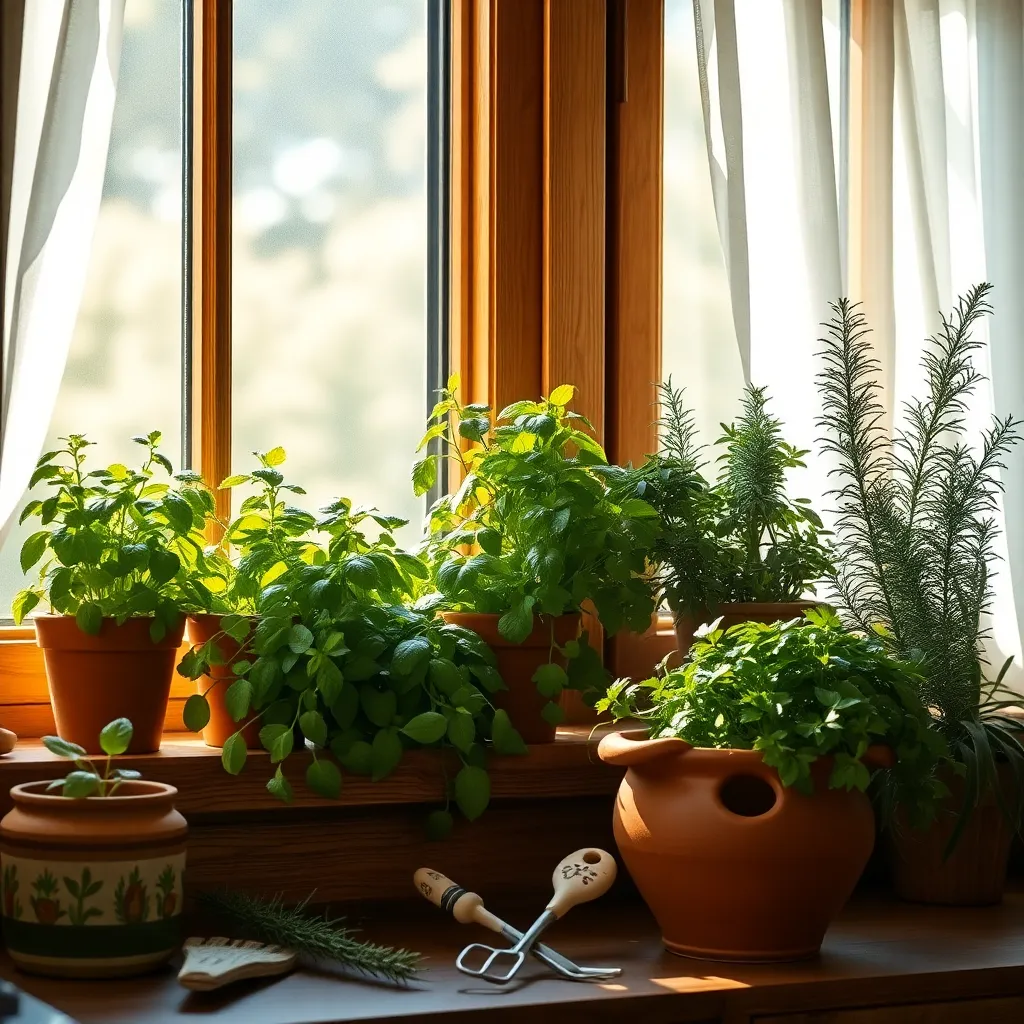
When creating a thriving indoor herb garden, finding the sunniest windowsill is crucial for optimal growth. Most herbs, such as basil and rosemary, require at least six hours of direct sunlight each day to flourish.
To determine the sunniest spot, observe your windowsills at different times of the day. East-facing windows offer bright morning light, while south-facing windows provide consistent sunlight throughout the day, making them ideal for most herbs.
For those living in areas with limited sunlight during certain seasons, consider using a grow light. Position the grow light about 6 inches above your plants, running it for 12-16 hours a day to mimic natural sunlight.
Once you’ve chosen the perfect spot, remember to rotate your herb pots every few days to ensure even light exposure. This simple action prevents your plants from growing unevenly or leaning towards the light source, promoting healthier growth.
Use Lightweight Potting Mix
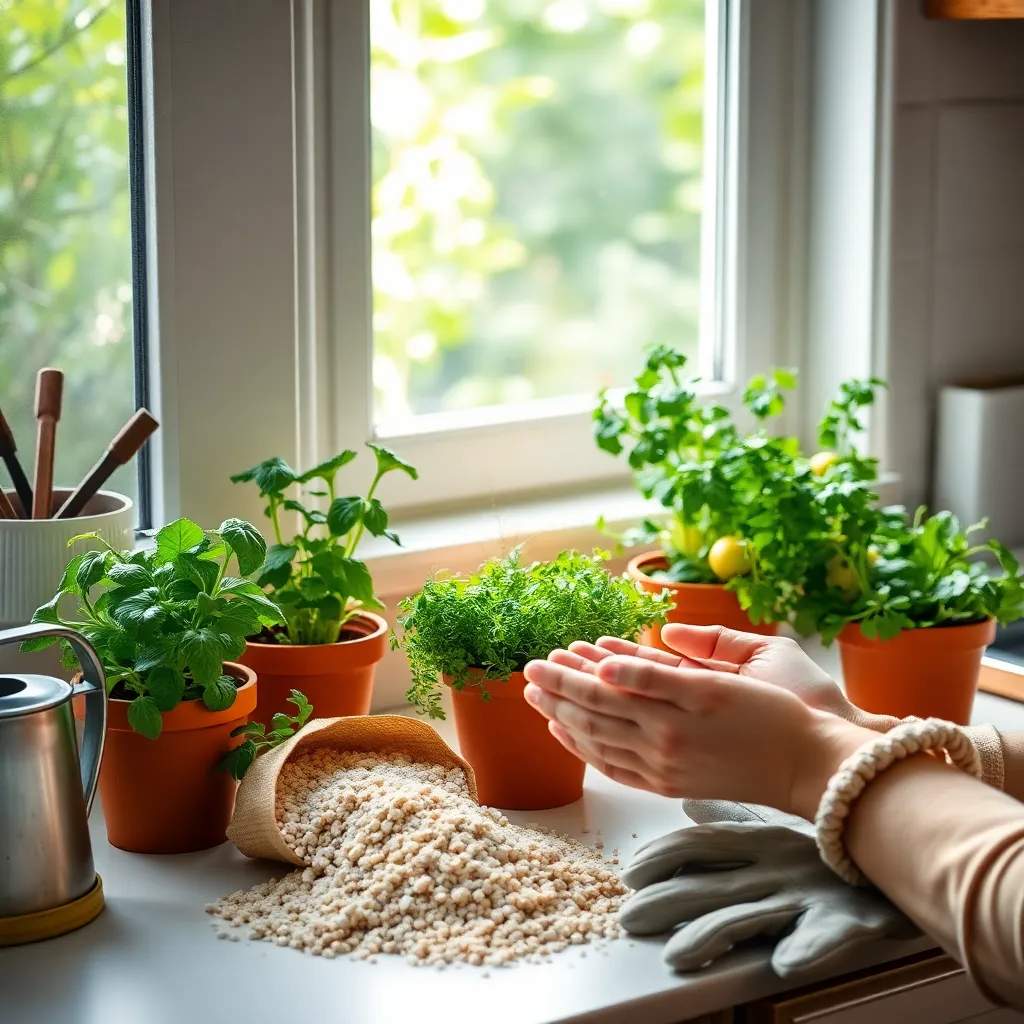
When starting your indoor herb garden, using a lightweight potting mix can significantly enhance plant growth. These mixes are designed to be well-draining and are often enriched with organic matter that provides essential nutrients for herbs.
For the best results, look for potting mixes that contain ingredients like perlite or vermiculite, which help improve aeration and drainage. This ensures that the roots of your herbs won’t sit in waterlogged soil, which can lead to root rot.
Additionally, lightweight potting mixes often include coconut coir or peat moss, which help retain moisture without becoming too compacted. This is particularly beneficial in indoor settings where evaporation rates are typically lower than outdoors.
For those looking to enhance their herb garden further, consider adding a slow-release organic fertilizer to the mix. This will provide a steady supply of nutrients, ensuring your herbs remain healthy and vibrant throughout their growth cycle.
Label Herbs for Easy Identification
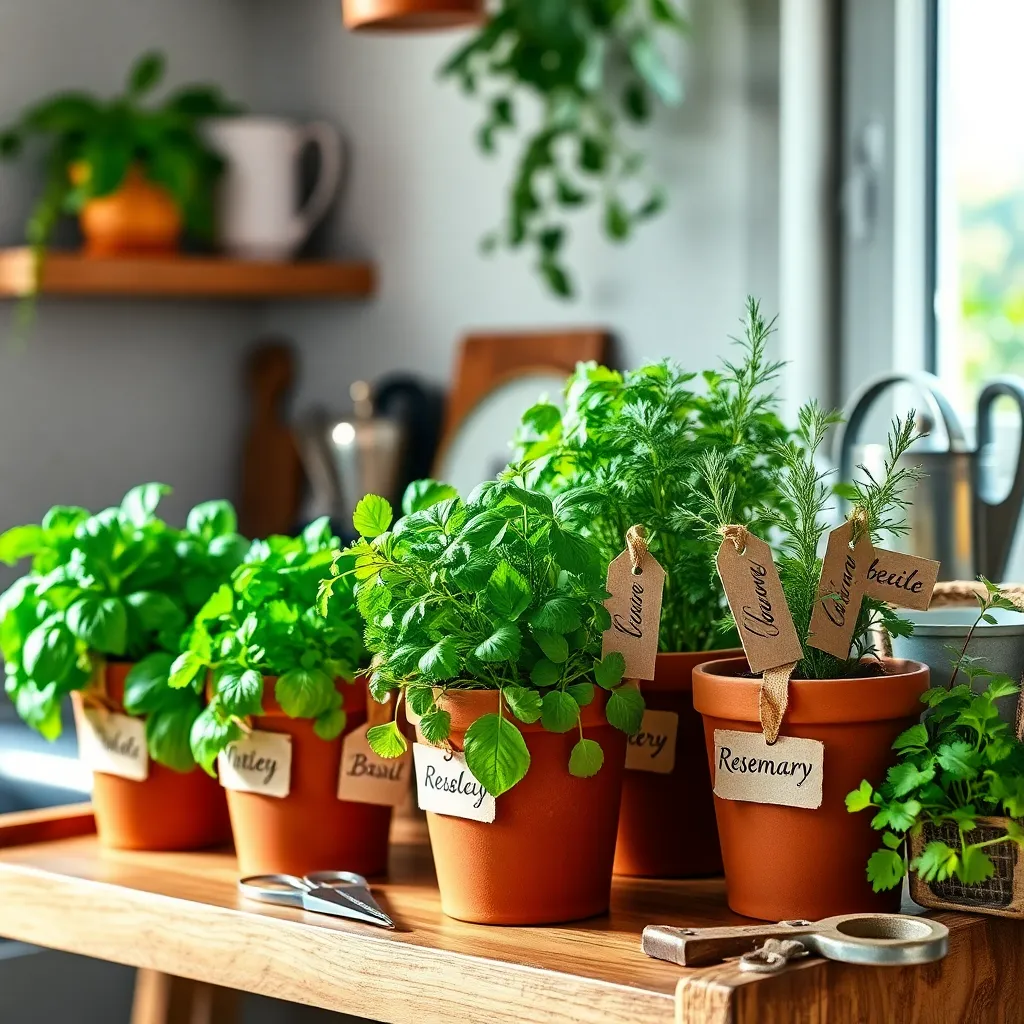
Labeling your herbs is an essential step to ensure you can easily identify each plant as they grow. By using durable, weather-resistant markers, you can create labels that last longer and withstand indoor conditions.
Consider using wooden or plastic stakes that can be inserted into the soil. These materials are sturdy and can be written on with a waterproof marker to prevent smudging and fading.
For a more creative touch, you might customize your labels with color coding or drawings. This not only helps in identification but also adds a decorative element to your indoor herb garden.
If you’re growing multiple varieties of the same herb, like different types of basil, include specific details on the label. Noting the variety can help you track their growth habits and flavor variations, enhancing your gardening experience.
To further enhance your labeling system, consider keeping a small garden journal. This will allow you to note any peculiarities or care instructions specific to each herb, making future gardening endeavors even more successful.
Prune Regularly for Bushier Growth
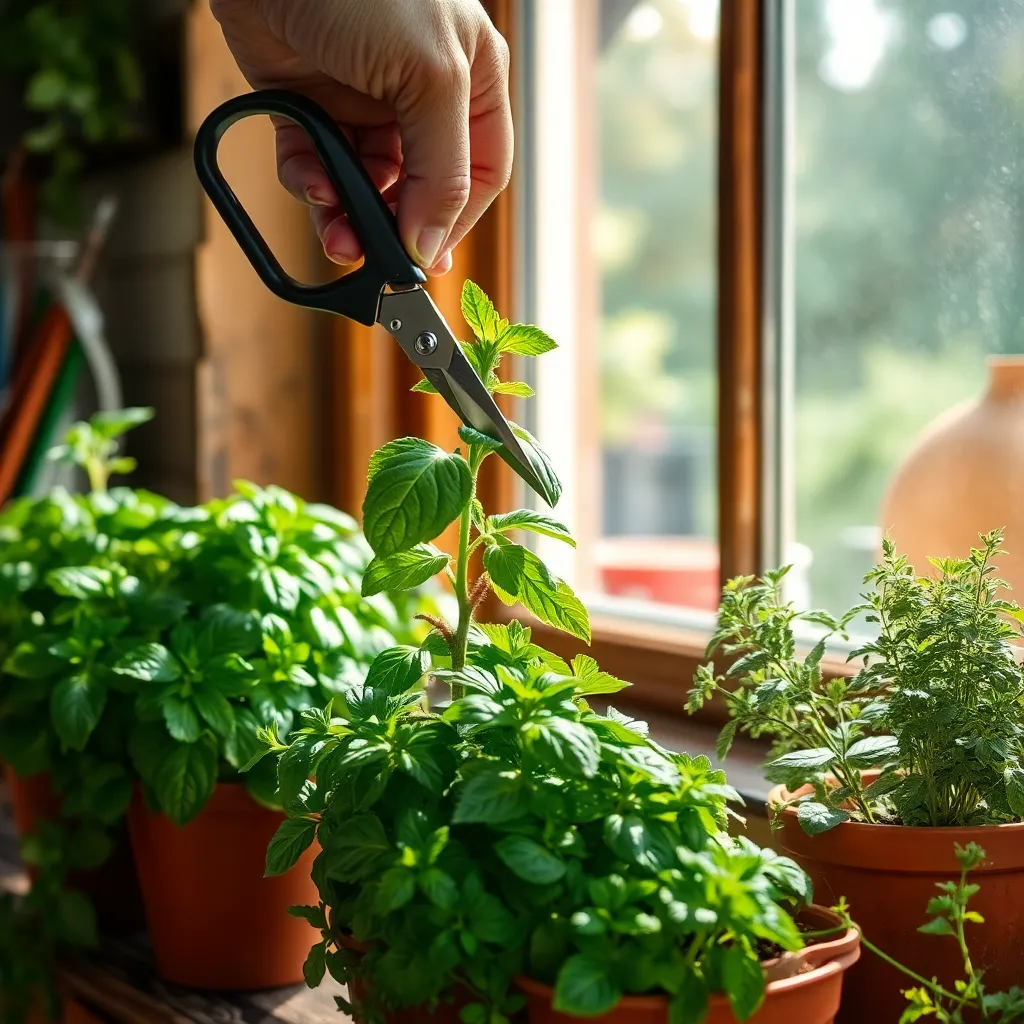
Pruning is an essential technique to encourage bushier growth in your indoor herb garden. By regularly trimming your plants, you promote new growth, leading to a fuller and more productive herb garden.
Begin by identifying the herbs that benefit most from pruning, such as basil, mint, and rosemary. Use sharp, clean scissors or pruning shears to make clean cuts just above a node, where leaves join the stem.
For best results, prune your herbs every few weeks or when they start to look leggy. This not only keeps them compact but also prevents them from flowering, which can alter the flavor of some herbs.
Advanced gardeners can practice pinching, a technique where you remove the growing tips of plants with your fingers. This method can be particularly effective for herbs like thyme and oregano, which benefit from frequent attention.
- Tip: Always prune in the morning when the plants are well-hydrated, as this reduces stress on the plants.
- Tip: Compost the trimmings or use them in your cooking to avoid waste.
Remember, pruning is not just about aesthetics; it’s about maintaining plant health and productivity. With regular care, your indoor herb garden will thrive, offering a plentiful supply of fresh herbs for your culinary adventures.
Incorporate Self-Watering Planters
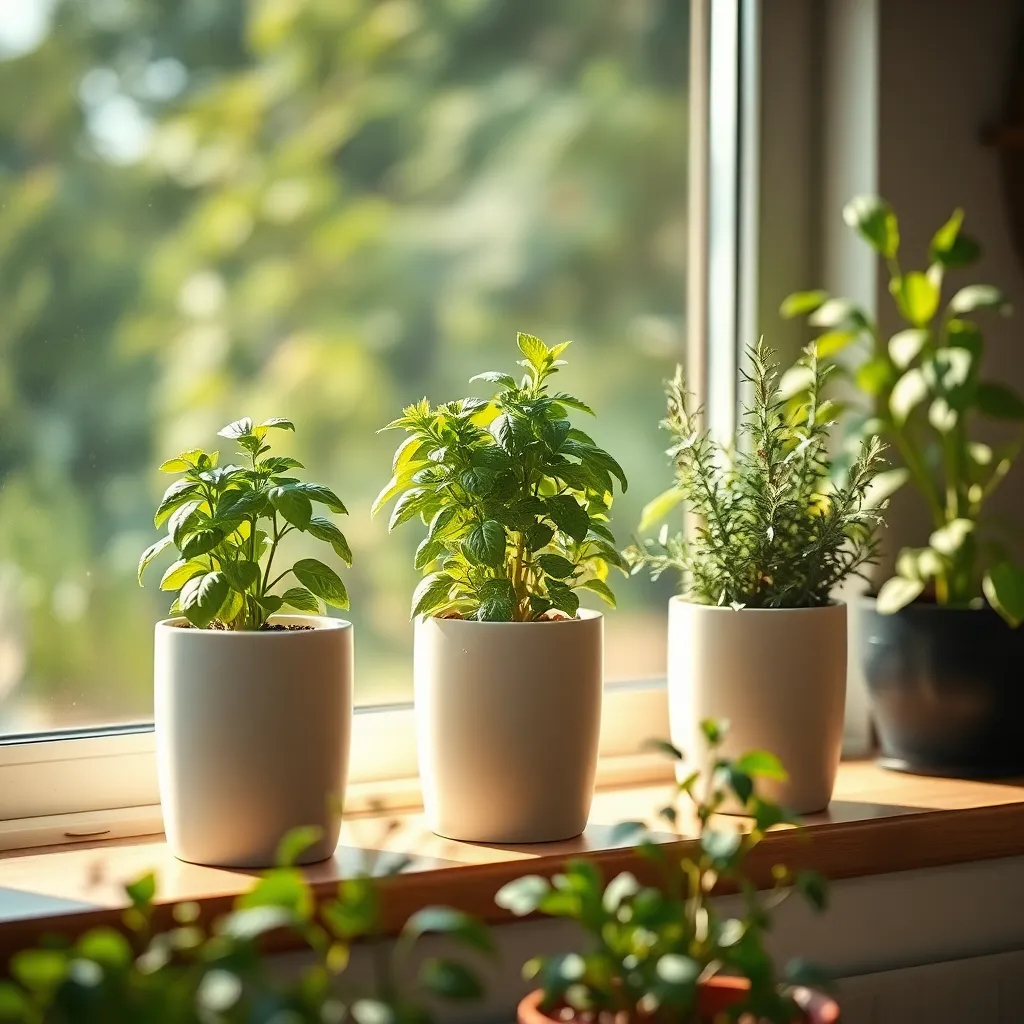
Self-watering planters are a fantastic way to ensure your indoor herbs receive consistent moisture without the risk of overwatering. These planters typically feature a reservoir system that allows the plant to draw up water as needed, which can be particularly beneficial for herbs like basil and mint that prefer consistently moist soil.
To get started, select a self-watering planter that fits the size of your chosen herbs, ensuring it has a visible water level indicator. Fill the reservoir with water and let your herbs absorb moisture gradually, which can reduce the frequency of manual watering to once every two weeks, depending on the climate and indoor conditions.
Choosing the right soil is also crucial for maximizing the effectiveness of self-watering planters. Opt for a lightweight, well-draining potting mix that contains materials like perlite or vermiculite to prevent soil compaction and ensure proper aeration. This type of soil facilitates better root growth and nutrient uptake, promoting healthier and more robust herb plants.
For those looking to take their indoor herb gardening to the next level, consider incorporating a slow-release fertilizer into the soil mix. This ensures your herbs receive a steady supply of nutrients over time, complementing the consistent moisture provided by the self-watering system. Advanced gardeners might experiment with companion planting within the same planter, such as pairing rosemary with thyme, to maximize space and enhance flavor profiles.
Conclusion: Growing Success with These Plants
In exploring the art of creating a DIY indoor herb garden, we’ve uncovered five key relationship concepts: the importance of nurturing growth together, the joy of shared activities, the balance of giving and receiving care, the patience required in cultivating trust, and the delight in reaping the rewards of your efforts. These principles not only apply to gardening but are the foundation of thriving partnerships.
As an actionable next step, choose a simple herb like basil or mint to plant with your partner today, fostering both your garden and your bond. This shared project can be a stepping stone to deeper connection and mutual growth.
Remember, relationships, much like gardens, flourish with regular attention and care. Bookmark this article for future reference to remind yourself of these nurturing principles and revisit the practical tips anytime you need a relationship refresh.
Looking ahead, let this small step be a testament to your commitment to cultivate a robust and fruitful relationship. With continued effort and mutual support, you can look forward to a partnership that is as vibrant and enduring as the lushest of gardens.
